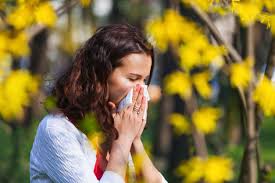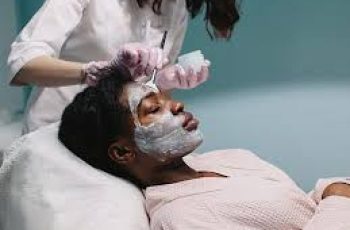
Your Ultimate Guide to Managing Spring Allergies and Protecting Sensitive Skin
As the days get longer and the weather begins to warm, spring welcomes us with blooming flowers, sunny afternoons, and a fresh start—but also introduces pollen, allergens, and seasonal skin sensitivities.
While many celebrate spring’s beauty, allergy sufferers brace for congestion, sneezing, watery eyes, and, unexpectedly, dry, itchy, and reactive skin that’s often overlooked during treatment.
Beyond itchy noses and red eyes, seasonal allergies can cause skin inflammation, puffiness, dark under-eye circles, and flakiness that disrupt both your comfort and your skincare routine.
If you’ve already reached for antihistamines or visited an allergist for relief, you’re on the right track—but the next step is updating your skincare to support your skin’s resilience during allergy season.
In this comprehensive guide, we’ll break down five dermatologist-recommended skincare steps to help you keep your skin calm, hydrated, and glowing—even when the pollen count is at its peak.
1. Calm Irritated Skin with a Hydrating, Anti-Inflammatory Mask
Inflammation is one of the first signs your skin is reacting to seasonal allergies—often visible as puffiness around the eyes, redness on the cheeks, and general tenderness across the face.
This happens because histamines released during allergic reactions cause your blood vessels to dilate and tissues to swell, making the skin around your nose and eyes especially puffy and reactive.
Combat this reaction by using facial masks designed to reduce inflammation, rehydrate dry skin, and soothe redness with calming botanical ingredients and gentle, cooling formulas.
Look for face masks that include ingredients like rosehip seed oil, aloe vera leaf juice, chamomile extract, or cucumber—all known for reducing swelling and replenishing the skin’s moisture balance.
Aloe vera has long been used for its anti-redness effects, while rosehip seed oil delivers essential fatty acids that help restore a damaged barrier and reduce visible inflammation.
Chamomile and cucumber offer instant relief from heat and itching while calming down overstimulated skin thanks to their naturally soothing, anti-inflammatory compounds.
Pro Tip: Store your mask in the fridge to enhance its cooling benefits, and apply it with a jade roller or a cold cryotherapy wand to help de-puff and push calming ingredients deeper into the skin.
Focus on irritated zones like your cheeks, under-eye area, and sides of the nose—areas most prone to swelling and redness caused by seasonal allergies and environmental stressors.
2. Brighten Dark Circles and Minimize Under-Eye Puffiness
Dark under-eye circles aren’t just from late nights—they’re often caused by allergy-induced sinus pressure, which slows circulation and creates shadowy pigmentation called “allergic shiners.”
When your nasal passages become congested, blood tends to pool under your eyes, causing discoloration, puffiness, and tired-looking skin that no concealer can fully fix without the right care.
To brighten and tighten this delicate area, use an eye gel or cream that targets both fluid retention and pigmentation with active ingredients that boost circulation and hydrate deeply.
Look for caffeine extract to stimulate blood flow and reduce fluid buildup, niacinamide to brighten dark circles, and peptides to firm the skin and restore elasticity over time.
Niacinamide is also anti-inflammatory, helping reduce puffiness caused by allergic irritation while simultaneously lightening discoloration for a refreshed, even-toned appearance.
Peptides improve skin texture by encouraging collagen production, making the under-eye area smoother, tighter, and more resilient to seasonal stress and lack of sleep.
Pro Tip: Tap your eye cream gently from the inner corner outward using your ring finger, or glide a chilled eye roller to stimulate lymphatic drainage and reduce stagnation and swelling.
3. Remove Pollen Without Aggravating Your Skin
During spring, pollen sticks to your clothes, clings to your skin, and even nestles into your hair—so cleansing properly at the end of the day is essential to reduce skin irritation and flare-ups.
Unfortunately, using harsh soaps or exfoliants during allergy season can further damage already sensitive skin, stripping away moisture and aggravating inflammation or dryness.
Choose a gentle, non-foaming cleanser that is fragrance-free, paraben-free, sulfate-free, and non-comedogenic—especially if you deal with eczema, rosacea, or sensitized, dry skin.
Opt for hydrating cleansers made with glycerin, oat extract, or panthenol, which clean your skin without disrupting its natural barrier or worsening allergic symptoms.
Cream or gel-based cleansers are ideal during allergy season because they remove impurities like pollen while soothing reactive skin with calming, moisture-retaining formulas.
Pro Tip: Wash your face immediately after coming inside from outdoor activities, especially during peak pollen hours in the early morning or late afternoon when allergen exposure is highest.
4. Rebuild and Fortify Your Skin Barrier for Defense
Your skin’s moisture barrier acts like a shield—defending against allergens, bacteria, UV rays, and pollution—but spring allergies and over-cleansing can weaken it, making you more vulnerable.
Once compromised, the skin barrier struggles to retain moisture and becomes more reactive, leading to increased redness, breakouts, flakiness, or sensitivity with every environmental trigger.
To restore and maintain your barrier, use moisturizers that contain barrier-building ingredients like ceramides, squalane, hyaluronic acid, and glycerin—all essential for healthy, strong skin.
Ceramides help seal in moisture and repair cracks in the barrier, squalane replenishes lipids lost through inflammation, and hyaluronic acid draws water deep into the skin’s layers.
During allergy season, lightweight moisturizers with humectants are ideal—they hydrate without suffocating the skin and reduce the risk of clogged pores in warmer, humid weather.
Avoid alcohol-based toners, synthetic dyes, or drying agents that can worsen inflammation or strip natural oils—look for fragrance-free formulas tested for sensitive and allergy-prone skin.
Pro Tip: Layer your moisturizer over damp skin to lock in hydration and finish with a broad-spectrum sunscreen of SPF 30 or more to protect from UV rays, blue light, and airborne pollutants.
5. Lifestyle Habits That Impact Allergies and Skin Health
Allergy skincare isn’t just topical—what you eat, drink, and how you live can either reduce or worsen symptoms, so supporting your skin from the inside out is just as important as your daily products.
Cutting back on inflammatory foods like sugar, processed snacks, and alcohol can help minimize skin reactions, as these items are known to elevate systemic inflammation and worsen allergy symptoms.
Some individuals also find dairy and caffeine contribute to mucus buildup and dehydration, so you may want to experiment with reducing these during peak allergy periods for better symptom control.
Instead, load your plate with anti-inflammatory foods such as salmon, sardines, walnuts, leafy greens, berries, turmeric, garlic, and ginger—all of which help reduce inflammation and support immunity.
Pro Tip: Consider adding a daily omega-3 supplement to your wellness routine, especially if you’re not eating fatty fish regularly—it supports both skin barrier health and a calmer immune response.
Sleep also plays a key role in reducing inflammation and repairing skin overnight—aim for 7 to 9 hours of quality sleep per night in a cool, allergen-free environment.
Switch to hypoallergenic bedding, regularly wash pillowcases, and keep your bedroom windows closed on high pollen days to reduce exposure while you rest and recharge.
Invest in an air purifier with a HEPA filter to trap indoor allergens like pollen, pet dander, and dust mites, creating a cleaner breathing and skincare environment in your living space.
Pro Tip: Take a quick shower and change clothes after spending time outside to rinse pollen from your body and hair before it can transfer onto your pillows, furniture, or face.
Final Thoughts: Enjoy Spring Without Sacrificing Your Skin
Spring allergies can feel overwhelming—but with the right approach, you can protect your skin and feel confident despite the sneezing, itchiness, and redness that come with the season.
Pairing a smart, allergy-friendly skincare routine with lifestyle adjustments, such as a cleaner diet and purified environment, can help ease symptoms and reduce irritation from the inside out.
Don’t wait until symptoms are severe—being proactive about allergy skincare means fewer flare-ups, better hydration, and healthier skin that glows even on high-pollen days.
If you’re unsure about which skincare products are safe and effective during allergy season, consult with a dermatologist to create a plan tailored to your skin type and allergy profile.
Spring doesn’t have to spell disaster for sensitive skin—so grab your cooling mask, store your eye gel in the fridge, and take back your glow with confidence and care this allergy season.


